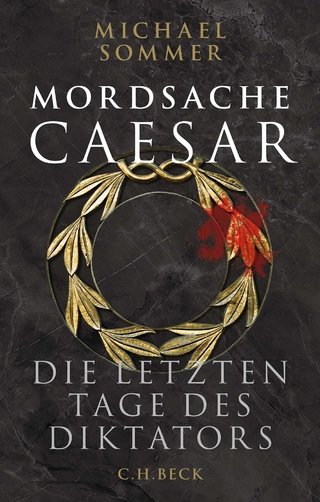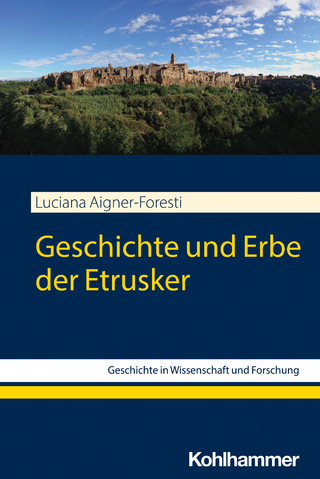
Visualising Glocalization
Archaeopress Archaeology (Verlag)
978-1-80327-895-7 (ISBN)
Glocalization, which can be defined as globalization refracted through the local, has been proposed as one of the most potent and innovative theoretical frameworks in the humanities and social sciences at this moment. However, its full application to and potential for archaeological studies has yet to be realized. For instance, in a debate on interdisciplinary perspectives on the growing use of the glocalization framework across social sciences, held in Cambridge in February 2018, V. Roudometof argued that the specific issue of how the concept should be applied to archaeological research, though, is best left to the people in the field, as they are far more knowledgeable about their own field than outsiders. This book aims to contribute to this debate by applying the glocalization framework to an archaeological dataset composed of a selection of partially and fully excavated villas, their associated architectural spaces, and pavements from Hispania Baetica between the 2nd and the 4th centuries AD. This book is one of the first ones exclusively focusing on glocalization and its application to an archaeological dataset in Roman archaeology. It also constitutes a novel approach to the study of Roman villa spaces, associated architecture, and their pavements. Furthermore, it presents an analytical model which allows other scholars to assess global phenomena across scales in specific territories.
Dr. Rubén Montoya González received his PhD in Archaeology at the University of Leicester, where he specialized in Classical Art History, Archaeology, and Global Studies. He completed his BA in History at Universidad Complutense de Madrid and a specialization in Classical Archaeology at Università degli Studi La Sapienza di Roma. Throughout his academic career, he has been awarded international grants and scholarships to conduct research in the U.K., U.S., Italy, and Spain. He regularly publishes scholarly articles and books on Roman art, archaeology, and social theory, as well as science-dissemination articles in National Geographic, Historia y Vida, and La Vanguardia. He has recently been a Margarita Salas Researcher at Universidad de Alcalá. Currently, he serves as an Associated Researcher at the Royal Netherlands Institute in Rome and an Adjunct Professor in Humanities at IE University (Spain), where he teaches courses in archaeology and research methodology.
Foreword
Chapter 1. Introduction
Research Aim and Objectives
Hispania Baetica: Geography, Economy and Territorial Organisation
Contextualising the Study of Villas and Mosaics in Hispania and in the Baetica province
Data Collection, Collation, and Analytical Methods
Structure of the Book
Chapter 2. The Global, the Local, and the Glocal
Introduction
Globalization and the Roman World
Towards Glocalization as a Framework
Conclusion
Chapter 3. Form and Architecture of Baetican Villa Spaces
Introduction
Room Types across Baetican Villas
Conclusion
Chapter 4. Villa Pavements in Context
Introduction
A Decorative Typology for the Study of Villa Décor
Types of Pavements by Types of Rooms Across Baetican Villas
Types of Pavements Across Types of Rooms in Baetican Villas
Conclusion
Chapter 5. Baetican Villa Pavements, Architectural Contexts and Spatial Function
Introduction
Grouping Room Types
Types of Pavements in ‘Predominantly Representational’ and ‘Predominantly Non-Representational’ Character Areas in Baetican Villas
Arrangement of the Decorative Patterns of Mosaic Pavements and Possible Functions
Subject Matter, Space and Function
Conclusion
Chapter 6. From Global Phenomena to Glocal Realities: the case of Baetican villas
Introduction
Glocalization and Baetican villas
Glocalization and the Display of Iconographies in a Seemingly Globalised Koine
A Hispano-Roman ‘villa model’? Baetican villas within the Iberian Peninsula
Conclusion
Chapter 7. Conclusion
Villa Spaces and Pavements in Hispania Baetica
Assessing the Frequency in the Display of Pavements across Villa Spaces
Assessing the Relationship Pavements-Space-Function and the Existence of a Hierarchical Use of Pavements in Villas
Investigating the Existence of Distribution Patterns Regarding the Types of Decoration and Decorative Scenes by Room Type
Glocalization, Baetican Villas and the Roman World: Future Research
Bibliography
Appendix A. A Gazetteer for the Study of Villa Décor from Hispania Baetica
Appendix B. Villa Spaces, Architectural Features and Types of Pavements by Room Types
| Erscheint lt. Verlag | 12.12.2024 |
|---|---|
| Reihe/Serie | Archaeopress Roman Archaeology |
| Zusatzinfo | 74 figures; 51 tables (colour throughout) |
| Verlagsort | Oxford |
| Sprache | englisch; spanisch |
| Maße | 205 x 290 mm |
| Themenwelt | Geisteswissenschaften ► Archäologie |
| Geschichte ► Allgemeine Geschichte ► Altertum / Antike | |
| ISBN-10 | 1-80327-895-1 / 1803278951 |
| ISBN-13 | 978-1-80327-895-7 / 9781803278957 |
| Zustand | Neuware |
| Informationen gemäß Produktsicherheitsverordnung (GPSR) | |
| Haben Sie eine Frage zum Produkt? |
aus dem Bereich


